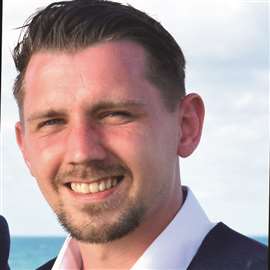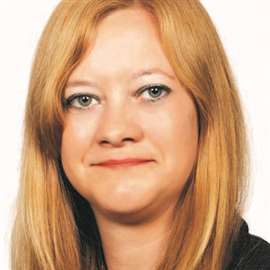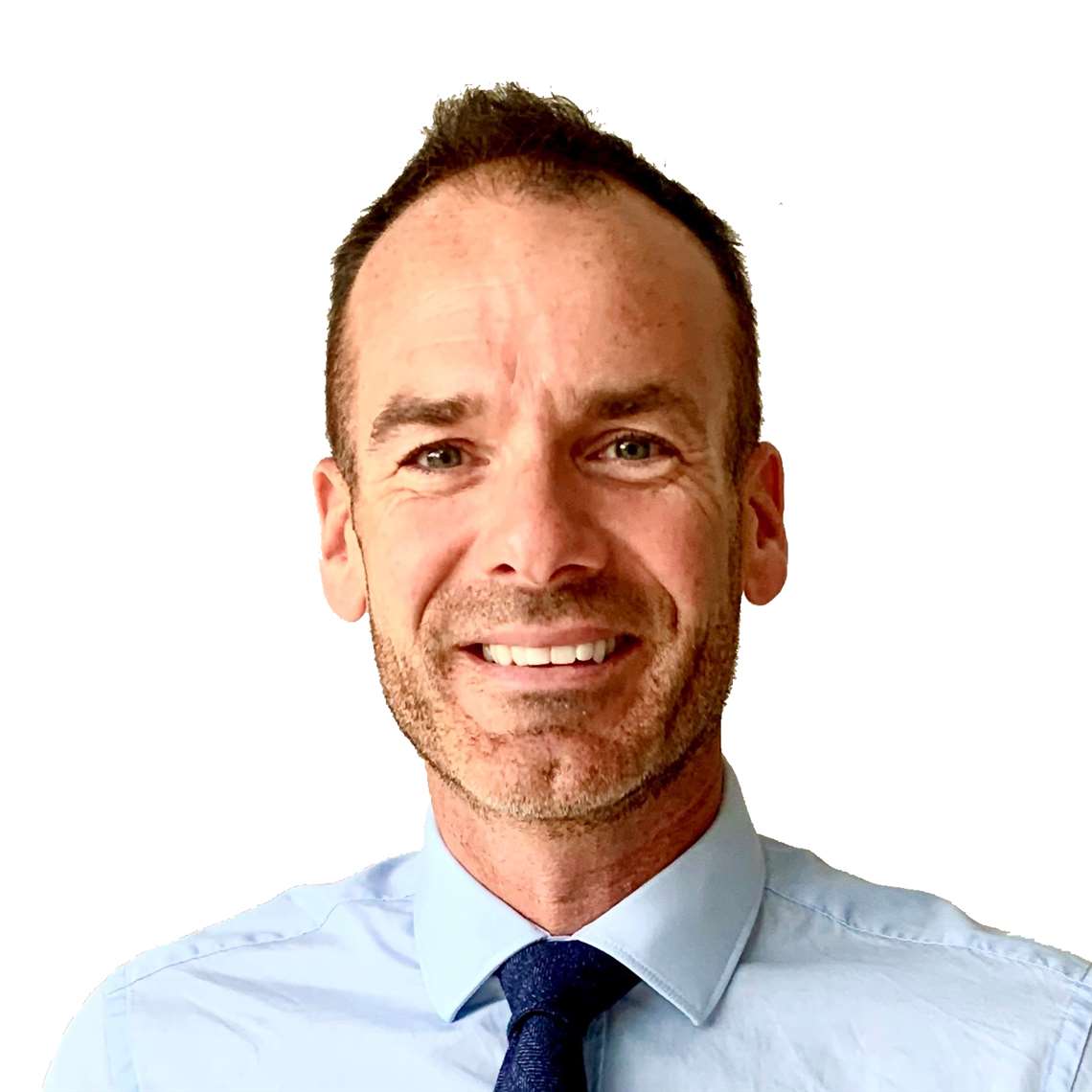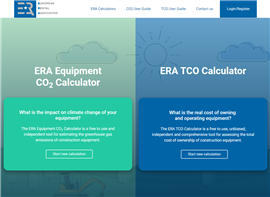Going local: JLG president on how tariffs are speeding up regional production plans
20 May 2025
Mahesh Narang only took over as president of the world’s largest access equipment manufacturer JLG at the end of 2023. Since then, a lot has happened. Last year the European Commission hit the company’s imports into the EU with an anti-dumping duty of more than 20%, adding to US import taxes on Chinese MEWPs introduced in 2021.
Then, this year, the company was impacted by the economic upheaval surrounding US President Donald Trump’s proposals to introduce tariffs on goods imported to the US from around the world as well as separate steel and aluminium tariffs.
With all this in mind, Access, Lift & Handlers editor, Lindsey Anderson, sat down with Narang to find out how the company is navigating the new economic realities.
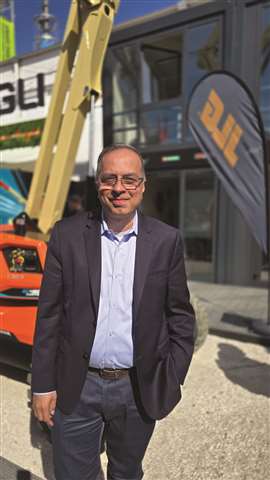 Mahesh Narang at this year’s Bauma exhibition. Photo: KHL
Mahesh Narang at this year’s Bauma exhibition. Photo: KHL
RB: What major challenges are you facing in 2025?
Mahesh Narang: All key metrics look healthy, with the only major uncertainty being the outcome of tariffs. That’s the one unknown. Otherwise, customers are generally optimistic about the year ahead. It may not match last year, but it should still be strong. The biggest challenge is managing uncertainty. Once the situation becomes clear we’ll know how to compete. We’re not alone—customers understand the challenges too, and we’ll figure it out together with our suppliers and partners.
How are tariffs affecting where JLG manufactures its products?
Duties or tariffs have existed in the US on China-made products for a while. Tariffs encourage fair competition. We are proponents of fair competition, but when certain companies or regions have an unfair advantage, it becomes difficult to reinvest in innovation.
Since the U.S. implemented tariffs, we’ve announced plans to open a new facility there [an R&D facility in Frederick, Maryland], increased our R&D spending. And we are doing the same in Europe [by shifting the production of selected diesel and electric boom lifts to its Hinowa plant in Nogara, Northern Italy]. We rolled our first machines off our line from our plant in Italy last week.
We repurposed our China plant and moved models destined for Asia there. We’ve rebalanced our global production to match regional demand. High logistics costs and lead times drove us to shift production where it’s needed. We transitioned from high-volume production of a few models to a wider range of lower-volume models. We also reduced production in China in response to demand. That adjustment has been underway for a year and a half and is now stable.
We are fine with globalization as long as it allows for fair competition. Some regions had an unfair advantage due to government subsidies, and leveling the playing field helps us reinvest in products that improve safety and productivity for people doing tough jobs. We’re focused on making their work easier.
Was JLG surprised that the European Commission imposed anti-dumping duties on its MEWP products?
Yes. In the end, we were surprised. We didn’t agree with the approach taken by the European Commission, and we will work with them to appeal it.
Our pricing is among the highest in the industry. The European Commission viewed us [Oshkosh JLG (Tianjin) Equipment Technology and Terex (Changzhou) Machinery] as separate entities. Because of that, they concluded we were dumping. If they had looked at us as one entity and considered our price levels, we don’t believe we were dumping.
That said, we respect what they do and will move forward. We would have localised manufacturing anyway. The decision simply accelerated our process. It ultimately doesn’t matter what the level of tariffs is if we manufacture in Europe.
How many facilities have you adapted or opened in the US for local production?
We opened a new [500,000 square foot telehandler production] plant in Jefferson City, repurposing an Oshkosh Defense facility. It was already depreciated, so it didn’t increase costs for Oshkosh. We repurposed it for JLG.
In Maryland, we’re opening the new satellite office and R&D facility in Frederick. That was more about accessing talent. As our products become more electric and digitized, we need software capabilities. Frederick is between DC and Baltimore and gives us access to the engineering talent we need. Our headquarters remains in Hagerstown, and we opened this satellite office to acquire specific skills.
Broadly, we don’t need to invest much in new facilities—we’re repurposing existing ones and leveraging our current footprint to make products for local regions. Our strategy is “local for local,” and that’s how we’re repurposing our capabilities.
How will the recent steel and aluminum tariffs impact your manufacturing costs and pricing strategies?
Most of our steel is sourced locally. In the US, we’ve locked in contracts. In Europe and China, we buy from local manufacturers as well.
Our contracts typically run 12 to 24 months, and our customers understand that commodity fluctuations must be passed on—up or down. When a contract expires and market prices shift, we adjust our cost and pricing structures accordingly.
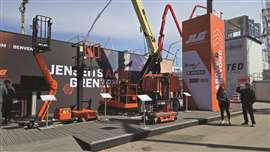 JLG’s stand at Bauma 2025. Photo: KHL
JLG’s stand at Bauma 2025. Photo: KHL
How do you expect tariffs to impact rental customers?
We haven’t raised our prices when moving production from China to Europe. We want our customers to make money too, because when they succeed, they buy more equipment. Our focus is on increasing value for them.
We want to be competitive and deliver innovation that boosts customer value. As a result, we don’t see a major impact on rental rates. In Europe, we’ve mitigated the tariff impact effectively.
A great example is the EC450 boom, which has a footprint about two-thirds the size of the previous model. Now, customers can load three on a trailer instead of two, reducing transport costs—a major expense for rental companies. While the machine may cost slightly more, total cost of ownership goes down, and that’s our philosophy.
What’s the focus of your engineering and product development strategy?
Our engineering strategy focuses on three themes. The first is innovation. Everything we make must be tailored for the region. For example, Europe wants more electric and compact machines, so we’re designing electric booms that are priced within 10% of diesel and more compact telehandlers. We also acquired a company to help build smaller models.
Second is electrification. All future machines will offer electric, hybrid, or diesel options. Electric models are quieter and support longer work hours. Hybrids act as range extenders, helping address range anxiety. Diesel remains important in markets without electric infrastructure.
Third is digitization and telematics. We have the industry’s best solution with two-way communication and over-the-air updates. New features include location services and predictive maintenance. Our goal is to allow customers to identify an issue and order a part within three clicks, with next-day delivery. These three pillars—innovation, electrification, and digitization—will guide us for the next five to seven years.
How important is innovation in your business?
When I think about innovation, it starts with our vision. We’ve moved from selling products to solving customer problems. For example, we now offer scissor lifts with LIDAR sensors for use around airplanes, including an airport-specific package.
We also focus on automating tasks. Our ClearSky digital network supports this vision. Innovation adoption tends to follow a hockey-stick curve. At first, it’s slow, then it takes off. The DaVinci [all-electric scissor lift] model didn’t take off immediately, but it taught us a lot. That technology is now in all future models, and adoption is growing.
We’ll continue investing in innovation. Some will deliver immediate returns; others will gain traction over time. There are always early adopters, and then the broader market follows.
Your backlog has recently decreased; how does this align with your 2025 projections and conversion to revenue?
In our industry, a six-month backlog is considered healthy, and we’re currently at that level. Customer ordering patterns have changed. They typically forecast three to six months out, and we fill in the rest.
I’m not overly concerned about backlog size, but I am concerned about uncertainty—especially if tariffs in the U.S. increase. If the impact is high, customers may pause to reassess, which could cause temporary shutdowns. It’s hard to predict anything until the situation settles.
Lead times have decreased too, and order placement has shifted. Are you seeing changes in fleet demand and composition?
Yes, and it’s working to our benefit. Customers are now buying machines they actually want, rather than whatever is available. That helps us grow market share and gives us confidence in the future. We’ve seen that shift firsthand.
What trends are you observing in how rental companies are managing their fleet utilization?
Different parts of the world have varying expectations for rental utilization—the ratio of rented machines to total fleet. Overall, utilization is still pretty good.
Some customers are performing better than others. In the US, mega projects are still strong, so utilization is higher there compared to regional construction markets impacted by interest rates or uncertainty.
Much of the current demand is replacement-driven. Customers want to keep their fleets fresh. Older fleets raise maintenance costs, while newer fleets can push rental rates too high. Most customers aim to maintain a balanced fleet age.
How does M&A activity among rental firms in the North American rental market impact your sales?
Companies like United and Sunbelt now represent roughly 25% of the U.S. rental market. We sell to everyone, though we do enjoy higher market share with certain customers. Consolidation generally works in our favor. Some customers buy more from us, some less, but overall it’s a positive trend.
STAY CONNECTED



Receive the information you need when you need it through our world-leading magazines, newsletters and daily briefings.
CONNECT WITH THE TEAM
